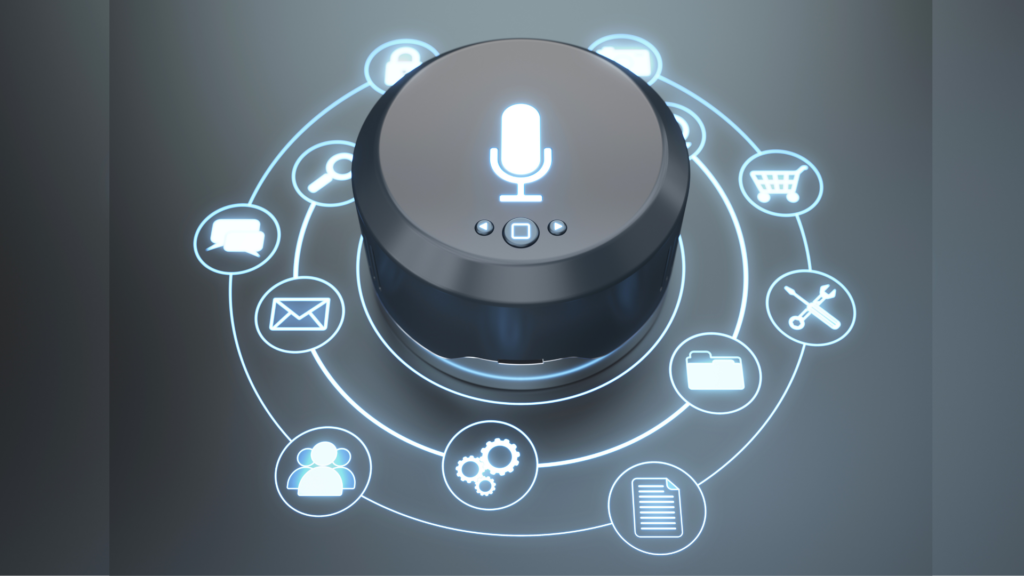“Hey Alexa, transfer ₹5,000 to my Paytm account.”
What if your smart speaker obeyed that command but it wasn’t you speaking?
Welcome to the world of voiceprint poisoning, a new frontier in adversarial machine learning where attackers manipulate your voice authentication system to impersonate you with synthetic precision.
What Is Voiceprint Authentication?

Modern smart speakers and voice assistants like Amazon Alexa, Google Assistant, Apple Siri and Samsung Bixby use voice biometrics commonly called voiceprints to recognize individual users.
These systems analyze characteristics such as pitch, tone, accent, rhythm, spectrogram patterns, mel-frequency cepstral coefficients (MFCCs), and temporal sequences of spoken tokens. Voice authentication models are typically powered by deep neural networks (DNNs), CNNs, or RNNs, trained on user-specific speech samples.
Once trained, the system checks whether new commands match the stored profile unlocking devices, confirming payments, adjusting thermostats, or opening doors.
What Is Voiceprint Poisoning?

Voiceprint poisoning is a machine learning attack where adversaries tamper with the voice authentication model during its training or retraining phase.
How It Works:
- Injection of Poisoned Samples:
Attackers inject synthetically generated or voice-converted audio samples into the system falsely labeled as the legitimate user. - Subtle Model Corruption:
These poisoned samples slightly shift the model boundaries, making the attacker’s voice accepted as the victim’s, without degrading overall performance. - Silent Takeover:
Once the model is updated, the attacker can issue commands and the speaker responds as if it’s you.
This isn’t just about mimicking your voice. It’s about convincing the machine you’ve retrained it yourself.
How Voiceprint Poisoning Differs from Deepfake Voice Attacks

While both involve synthetic voice usage, they are fundamentally different in impact and execution. Deepfake voice attacks are real-time impersonations, often blocked by liveness checks or behavioral analysis. In contrast, voiceprint poisoning alters the model itself. Once successful, the attack offers long-term access without triggering detection mechanisms, making it significantly more dangerous.
Why Voiceprint Poisoning Matters

Voiceprint poisoning allows attackers to take over devices and systems secured by voice authentication. They can unlock smart doors, trigger banking or shopping actions, and access emails, calendars, or other connected IoT systems.
The attack is particularly dangerous because it doesn’t reduce the system’s ability to recognize the legitimate user. That means there are no alerts, no system failures, and no reason to suspect anything is wrong. The attacker blends in perfectly.
What makes this threat scalable is the availability of AI voice generators and voice conversion tools like SV2TTS, Descript Overdub, and Resemble AI. With just a minute or two of your recorded voice from a podcast, video, or voicemail attackers can generate realistic clones capable of poisoning voiceprint models.
Real‑World Research & Case Studies

Researchers at Vanderbilt University and Tsinghua University developed a CNN-based defense system called Guardian, designed to detect poisoned voice samples during training or retraining. Guardian achieved approximately 95% detection accuracy, significantly outperforming older detection methods that hovered around 60%.
Other studies conducted across platforms like IEEE, ResearchGate, and arXiv have demonstrated how adversarial text-to-speech attacks consistently bypass standard voice authentication systems. These studies show that poisoning attacks succeed in over 80% of cases when there is no manual validation, and that attackers can reproduce voiceprints using less than 60 seconds of audio data.
How These Attacks Are Executed

The attack typically begins with audio harvesting, where an attacker collects public voice samples from online videos, social media, or intercepted recordings. These are then processed through voice synthesis or conversion tools to generate phrases that mimic the victim’s speech style.
The next step involves injecting these fake samples during a training or re-training window like when a smart speaker prompts the user to improve voice recognition or verify identity. Once these poisoned samples are accepted, the attacker’s voice becomes a trusted input.
From there, it’s easy for the attacker to trigger high-risk commands, such as unlocking a door or initiating a financial transaction.
How to Defend Against Voiceprint Poisoning

To defend against this attack, start with a secure data pipeline. Ensure that voice registration or retraining can only occur during authenticated sessions. This means requiring a phone unlock, biometric ID, or PIN verification before any new samples are accepted.
Next, manually review or cross-check voice samples during re-registration. Relying on fully automated re-training leaves your model vulnerable to subtle corruption.
Use poison detection tools like Guardian to flag suspicious or tampered samples during the re-training phase. These systems can analyze audio patterns and identify abnormalities that indicate synthetic manipulation.
Implement adversarial retraining techniques by introducing obfuscated or adversarial samples during the training phase, making the system more resilient to voice mimicry and synthetic variation.
Layer authentication for sensitive actions. For example, even if voiceprint says “yes,” it requires confirmation through a mobile device, biometric scan, or PIN before executing high-risk commands like transactions or door unlocks.
Finally, audit the voice model regularly. Keep logs of voice training sessions, timestamps, and audio samples. Regular audits help identify anomalies in usage or voice profile updates.
So, a quick checklist:
- Secure data pipeline
- Manually review or cross-check voice samples
- Use poison detection tools
- Implement adversarial retraining techniques
- Layer authentication for sensitive actions
- Audit your voice model regularly
So, what now?

Voiceprint poisoning may sound like science fiction but it’s already knocking on the doors of smart homes, banks, and corporate IoT systems.
As AI-generated voices become more convincing and smart speakers more powerful, the risk of these invisible identity attacks will only grow.
The solution isn’t just better voice recognition, it’s smarter, layered defenses. Lock down the training process. Use adversarial retraining. Monitor your system. Because your voice is your password, and in a world of deepfakes and synthetic threats, you need to make sure it’s not anyone else’s.

